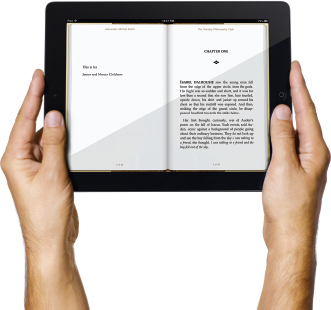Tech Tip: Embrace the E-Book
TECH TIP EMBRACE THE E-BOOK
TECH TIP EMBRACE THE E-BOOK
1 THE PROBLEM

Your back hurts from carrying around heavy textbooks and you’re aware that you can buy them as e-books.
2 THE FIX
Discover how reading a digital reader differs from (and can even be better than) reading traditional ink-on-paper books.
3 HOW TO DO IT
THE PROS
Digital reading devices are eminently portable—most weigh about 1 pound—and can hold thousands of books. (They’re fantastic for those long flights when you don’t want to pack the entire Hunger Games trilogy.)
They can handle a range of media, from books to newspapers to magazines.
They save trees: no shipping costs and a low carbon footprint.
They let you buy books online from anywhere; you can start reading within minutes.
They let you shop internationally. Even if you’re in a remote Chinese village, you can easily find plenty of cyberbooks in English.
You can type notes in an e-book as well as highlight passages and copy and paste sections.
You can print out pages simply by hooking the device up to your printer.
Many of the books you can access are free: You can download books from the public library; you can even click to the British Library’s Online Gallery to peruse some of the oldest and rarest books on record.
Some e-books come with bonus audio, video, or animation features.
Many digital reading devices even accept audio books and can read to you aloud.
The backlit screen means that you can read in bed with the light off, without keeping your roommate awake.
You can adjust the size of the text, making it easier to read.
Some link directly to a built-in dictionary. Just highlight a word, and it will look it up. Others also will link to reference Web sites like Google or Wikipedia when a wi-fi or 3G connection is available.
E-books are searchable and even sharable.

THE CONS
Digital reading devices are expensive.
Unlike books, they can break if you drop them.
It’s harder to flip through pages of an e-book than a printed book.
You’ve never tried reading a textbook on a digital reading device.
GOOD TO KNOW
The most popular electronic e-readers include versions of the iPad, Kindle, Nook, and Kobo Touch. Some versions are no-frills, basic models designed to replicate the experience of reading a paper book. Others offer touch color screens, Web browsers, video, music, and thousands of free and for-purchase apps.
PERSONAL BEST
Do you use an e-reader? How does using an e-book differ when reading a textbook versus reading a book for fun?